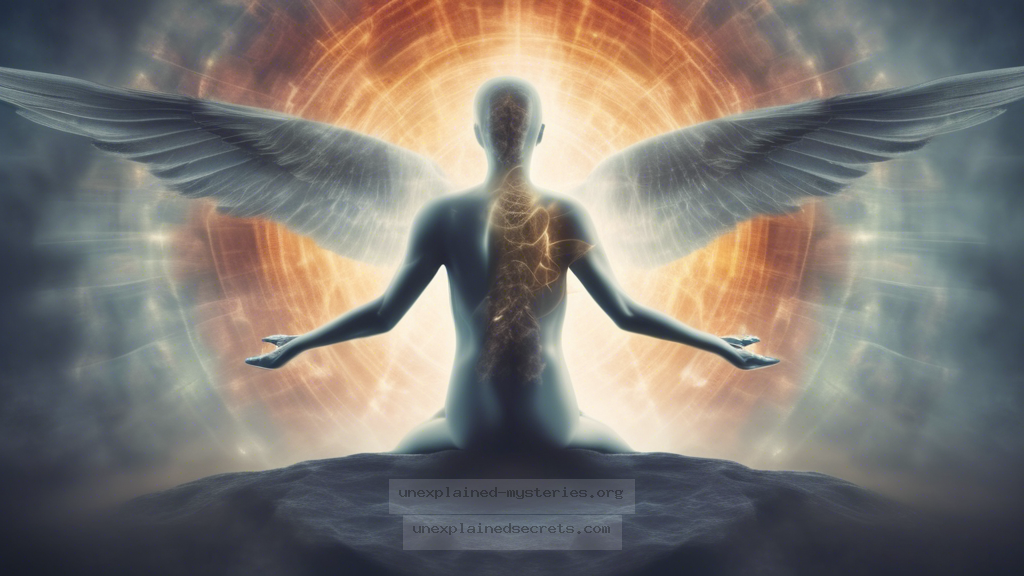What Do Consistent Near-Death Experience Reports Reveal About Consciousness After Clinical Death?
What Do Consistent Near-Death Experience Reports Reveal About Consciousness After Clinical Death?
The phenomenon of Near-Death Experiences (NDEs) has captivated the interest of scientists, theologians, and the general public for decades. What happens to consciousness when the body is clinically dead? How do the consistent reports of individuals who have experienced NDEs challenge our understanding of life, death, and what may lie beyond? This question is not merely academic; it touches on fundamental aspects of human existence, spirituality, and the potential for life after death. In this blog post, we will delve into the nuances of NDEs, exploring their implications, the evidence surrounding them, and the broader questions they raise about consciousness.
Historical Context of Near-Death Experiences
The historical context of NDEs can be traced back to ancient civilizations, where documented accounts of this phenomenon appear in religious texts and folklore. For instance, the ancient Egyptians described journeys through the afterlife in the “Book of the Dead,” while Tibetan Buddhism has the “Bardo Thodol” (Tibetan Book of the Dead), which outlines experiences after death.
However, it wasn’t until the late 20th century that NDEs gained significant attention in the West. Dr. Raymond Moody’s 1975 book “Life After Life” introduced the term “near-death experience” and compiled various accounts from individuals who reported profound experiences during clinical death.
Core Concepts of Near-Death Experiences
NDEs often include a variety of common elements such as an out-of-body experience, feelings of peace, tunnel experiences, encounters with deceased individuals, and a life review. These consistent elements suggest that NDEs may be more than mere hallucinations. Researchers have identified several core concepts related to NDEs, including:
- Consciousness Separation: Many individuals report a sensation of detachment from their physical bodies, observing the medical procedures performed on them.
- Transcendental Experiences: A profound sense of peace and unconditional love is frequently reported.
- Life Review: Some individuals describe a detailed review of their life, where they relive significant moments and the emotional impact of their actions on others.
- Encounters with Beings: Many NDErs report meeting deceased relatives or spiritual beings who offer guidance.
Scientific Research and Evidence
Numerous studies have attempted to explore the phenomena surrounding NDEs scientifically. One of the most compelling pieces of evidence comes from research conducted by Dr. Pim van Lommel, a Dutch cardiologist. In a 2001 study published in the journal “The Lancet,” he examined 344 patients who experienced cardiac arrest. His results showed that 18% of these patients reported NDEs, with many detailing experiences that were consistent with the core concepts mentioned earlier.
Practical Implications of Near-Death Experiences
The implications of NDE research extend beyond the realm of spirituality and into psychology, healthcare, and end-of-life care. Understanding NDEs can enhance patient care, particularly in how we approach death and dying. Healthcare providers can benefit from recognizing the profound psychological effects of NDEs, which may lead to improved communication with patients and their families regarding end-of-life issues.
Alternative Perspectives on NDEs
While many view NDEs as evidence of consciousness continuing after death, others argue from a skeptical perspective, attributing such experiences to neurobiological phenomena. Critics often cite the lack of empirical evidence supporting the existence of an afterlife. They propose that NDEs may be the result of brain activity during trauma or the effects of medications, oxygen deprivation, or chemical reactions. This debate raises questions about the nature of consciousness and its relation to the physical brain.
Common Misconceptions and Clarifications
Despite the growing body of research, several misconceptions about NDEs persist. One common belief is that all NDEs are overwhelmingly positive. While many are, some individuals report distressing experiences or “negative” NDEs. These experiences can be transformative and lead to significant life changes, often encouraging individuals to reassess their values and priorities.
Best Practices for Investigating Near-Death Experiences
For those interested in studying NDEs, several best practices can enhance the quality of research. Firstly, employing qualitative methods, such as in-depth interviews, can capture the richness of personal experiences. Additionally, researchers should strive to create a safe environment for participants, allowing them to express their feelings without judgment. Cross-cultural studies can provide insights into how different societies interpret NDEs, enriching our understanding of this complex phenomenon.
Future Developments and Ongoing Research
As interest in NDEs continues to grow, future developments may include advancements in neuroimaging technology, which could allow researchers to study brain activity during clinical death more effectively. Furthermore, interdisciplinary collaboration among neuroscientists, psychologists, and theologians may yield more comprehensive insights into the nature of consciousness and the significance of NDEs.
Conclusion
In conclusion, the investigation of Near-Death Experiences presents a fascinating intersection of science, spirituality, and philosophy. The consistent reports of NDEs challenge our understanding of consciousness, offering tantalizing glimpses into the possibility of existence beyond clinical death. As research advances and societal perspectives evolve, the dialogue surrounding NDEs will undoubtedly continue to inspire curiosity and contemplation about life, death, and what may lie beyond.
Other Articles
Recent Posts
- What Happened to Flight MH370? The Conspiracy Theories That Still Haunt Us
- What Secrets Lurk Within the Walls of the Infamous Trans-Allegheny Lunatic Asylum?
- What Evidence Supports the Existence of Bigfoot in the Pacific Northwest?
- What Happened to the Indus Valley Civilization? Unraveling the Mysteries of Ancient Urban Life
- Can Telepathy Be Scientifically Proven Through Laboratory Evidence?







